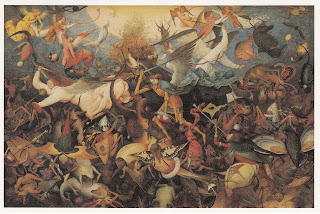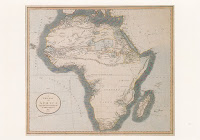Between Thursday and Sunday I was in Brussels and there I bought some cards for my collection.
Brussels is the capital of Belgium and also one of the three Belgian Regions. It has become a major centre for international politics after World War II, as it is the capital of the European Union and the headquarters of the NATO is located there.
Manneken Pis is the most famous landmark of Brussels. It is a small bronze sculpture depicting a naked little boy urinating into a fountain's basin and was erected in 1619. For various occasions the statue is dressed in costumes.
The Grand Place is the main square of Belgium's capital and was an important political and commercial centre. Due to its homogeneous buildings it is considered to be the most beautiful square in Europe. It is also a popular tourist destination. The Grand Place is since 1985 on the UNESCO World Heritage List.
The Town Hall of Brussels was built between 1402 and 1420 in the Gothic style. It is located on the Grand Place.
The Museum of the City of Brussels is housed in the Maison du Roi opposite the Town Hall. The museum was opened in 1887. It was home to the costumes of Manneken Pis before they got their own museum in 2017.
The Galeries Royales Saint-Hubert is a glazed shopping arcade that preceded other famous 19th century shopping arcades. It was built between 1846 and 1847 and reflected the prosperity and ambition of the new Belgian state. The Galeries Royales Saint-Hubert seeks for the inclusion on the UNESCO World Heritage List and is thus on the Tentative List, but for some reason the card says that it is already classified as World Heritage.
The European Quarter is home to important buildings of the European Union. The European Commission, the Council of the European Union, the European Council and the European Parliament are located there.
Stamps:
Lucky Luke - Friend and Enemy (two from set of ten) (issued 13-04-2015)
The Parlamentarium is the visitor's centre of the European Parliament and was opened in 2011. In a multimedia exhibition it shows the history of the EU and the European Parliament. Due to personal multimedia guides it is possible to view the exhibition in all 24 official languages of the EU.
The House of European History is a museum about the history of Europe since 1789. It is an initiative by the European Parliament and opened in 2017.
The Atomium was built for the Expo 1958. It resembles the shape of a unit cell of an iron crystal magnified 165 billion times and is one of Belgium's most famous sights. The spheres are home to exhibition halls.
The Belgian Comic Strip Center is a museum about Belgian comics. The museum is housed in a building designed by Victor Horta and was opened in 1989. It is among the most popular museums in Brussels.
The Horta Museum is a museum dedicated to the life and work of the Belgian Art Nouveau architect Victor Horta and is housed in Horta's former house and atelier. As one of the Major Town Houses of the Architect Victor Horta is the museum since 2000 on the UNESCO World Heritage List.
The Musical Instruments Museum was established in 1877 and since 2000 it is housed in the former art nouveau style Old England department store. It is famous around the World for its collection of over 8000 instruments.
The Oldmasters Museum was founded in 1801. It shows European paintings from the 15th to the 18th century and is a part of the Royal Museums of Fine Arts of Belgium. At the moment the museum shows a magnificent exhibition about Pieter Bruegel the Elder in cooperation with various art museums around the World and the Google Cultural Institute.
The Fin-de-Siècle Museum is another part of the Royal Museums of Fine Arts of Belgium and is located next to the Oldmasters Museum. It shows artworks from the period between 1868 and 1914. The museum was opened in 2013.
The Magritte Museum was opened in 2009. It is dedicated to the work of the Belgian surrealist artist René Magritte and is a part of the Royal Museums of Fine Arts of Belgium.
The Palace of Coudenberg was for nearly 700 years the centre of the Duchy of Brabant and as such it was the residence of counts, dukes, archdukes, kings, emperors and governors, but in 1731 the palace burned down within one night. For more than 40 years it was a ruin before it was replaced by the Place Royale. The remaining cellars of the palace have been extensively excavated below present ground level from 1985 onwards and can be visited. The Palace of Coudenberg was preselected for the European Heritage Label.
The Royal Museum for Central Africa was built to showcase King Leopold II's Congo Free State in the 1897 World Exhibition. Actually intended as a colonial museum, from 1960 onwards it has more focused on ethnography and anthropology. Unfortunately the museum is closed until June 2018 due to renovations.
At the Belgian Comic Strip Center I first bought a few cards about Tintin. Later I bought a few more at the Boutique Tintin and finally decided to buy all I could find. So now I have one card about every Tintin book. ^___^
Apart from Tintin I also bought a few cards about other comics including the Smurfs, Asterix and the Marsupilami.









































































No comments:
Post a Comment